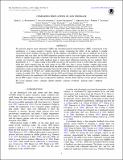Files in this item
Comparing simulations of AGN feedback
Item metadata
| dc.contributor.author | Richardson, Mark L. A. | |
| dc.contributor.author | Scannapieco, E. | |
| dc.contributor.author | Devriendt, J. | |
| dc.contributor.author | Slyz, A. | |
| dc.contributor.author | Thacker, Robert J. | |
| dc.contributor.author | Dubois, Y. | |
| dc.contributor.author | Wurster, J. | |
| dc.contributor.author | Silk, J. | |
| dc.date.accessioned | 2019-10-22T10:30:05Z | |
| dc.date.available | 2019-10-22T10:30:05Z | |
| dc.date.issued | 2016-07-10 | |
| dc.identifier | 262149924 | |
| dc.identifier | 85006aa4-e717-4d92-b89b-1eadb4106d6d | |
| dc.identifier | 84978372397 | |
| dc.identifier.citation | Richardson , M L A , Scannapieco , E , Devriendt , J , Slyz , A , Thacker , R J , Dubois , Y , Wurster , J & Silk , J 2016 , ' Comparing simulations of AGN feedback ' , Astrophysical Journal , vol. 825 , no. 2 , 83 , pp. 1-26 . https://doi.org/10.3847/0004-637X/825/2/83 | en |
| dc.identifier.issn | 0004-637X | |
| dc.identifier.other | Bibtex: Richardson+2016 | |
| dc.identifier.other | ORCID: /0000-0003-0688-5332/work/63716925 | |
| dc.identifier.uri | https://hdl.handle.net/10023/18737 | |
| dc.description.abstract | We perform adaptive mesh refinement (AMR) and smoothed particle hydrodynamics (SPH) cosmological zoom simulations of a region around a forming galaxy cluster, comparing the ability of the methods to handle successively more complex baryonic physics. In the simplest, non-radiative case, the two methods are in good agreement with each other, but the SPH simulations generate central cores with slightly lower entropies and virial shocks at slightly larger radii, consistent with what has been seen in previous studies. The inclusion of radiative cooling, star formation, and stellar feedback leads to much larger differences between the two methods. Most dramatically, at z=5, rapid cooling in the AMR case moves the accretion shock to well within the virial radius, while this shock remains near the virial radius in the SPH case, due to excess heating, coupled with poorer capturing of the shock width. On the other hand, the addition of feedback from active galactic nuclei (AGNs) to the simulations results in much better agreement between the methods. For our AGN model, both simulations display halo gas entropies of 100 keV cm2, similar decrements in the star formation rate, and a drop in the halo baryon content of roughly 30%. This is consistent with the AGN growth being self-regulated, regardless of the numerical method. However, the simulations with AGN feedback continue to differ in aspects that are not self-regulated, such that in SPH a larger volume of gas is impacted by feedback, and the cluster still has a lower entropy central core. | |
| dc.format.extent | 26 | |
| dc.format.extent | 22858877 | |
| dc.language.iso | eng | |
| dc.relation.ispartof | Astrophysical Journal | en |
| dc.subject | Galaxies: active | en |
| dc.subject | Galaxies: clusters: general | en |
| dc.subject | Galaxies: evolution | en |
| dc.subject | Galaxies: halos | en |
| dc.subject | Methods: numerical | en |
| dc.subject | QB Astronomy | en |
| dc.subject | QC Physics | en |
| dc.subject | 3rd-DAS | en |
| dc.subject.lcc | QB | en |
| dc.subject.lcc | QC | en |
| dc.title | Comparing simulations of AGN feedback | en |
| dc.type | Journal article | en |
| dc.contributor.institution | University of St Andrews. School of Physics and Astronomy | en |
| dc.identifier.doi | 10.3847/0004-637X/825/2/83 | |
| dc.description.status | Peer reviewed | en |
| dc.identifier.url | https://arxiv.org/abs/1605.03589 | en |
This item appears in the following Collection(s)
Items in the St Andrews Research Repository are protected by copyright, with all rights reserved, unless otherwise indicated.

